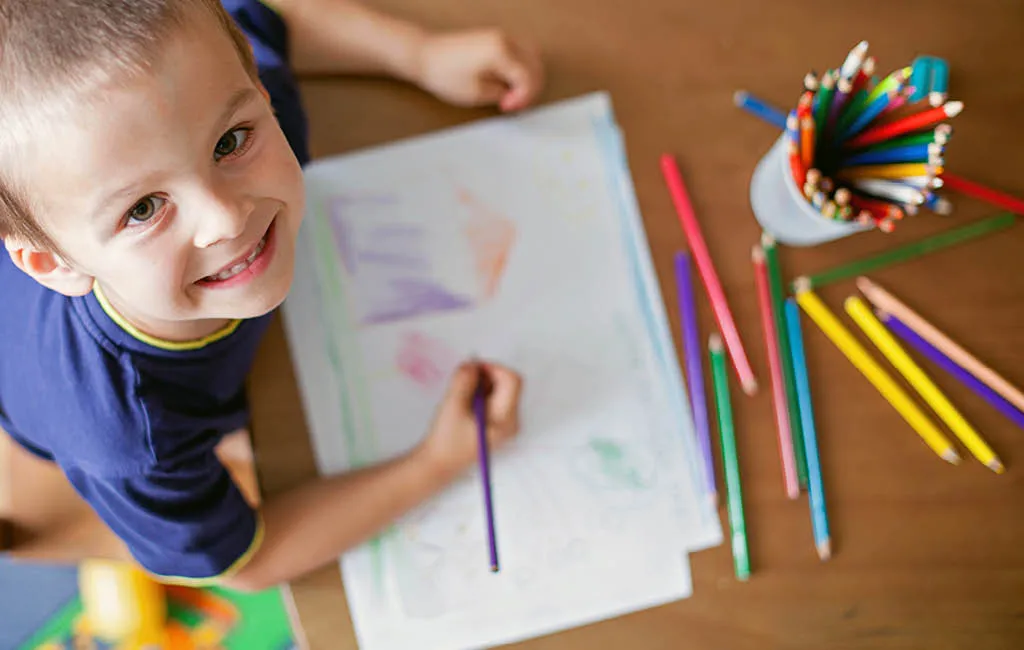Drawing is more than just a pastime
Even toddlers express their creativity by scribbling on paper. Little by little, simple lines become figures with arms and legs. Drawing allows children to engage with their everyday lives, process experiences, and express their emotions. At the same time, they develop fine motor skills that support them later in learning to write. Starting school often reveals that many children struggle to draw a simple house and sun or write basic letters. One possible reason is that their hand coordination is not yet developed enough. When kids draw or do crafts, they use their fingers in a completely different way than when they tap or swipe on a screen. They grasp, press, cut, shape, fold, and glue. In the process, their finger dexterity improves. A drawing corner with a small table, shelf, and art supplies encourages children to draw freely. If space is limited, a basket keeps everything within easy reach for creative moments at the kitchen or living room table. After all, preschoolers love to draw and play close to their parents. When ideas run out, Mom or Dad just draw along for a while. The drawings are displayed on the fridge or a pinboard and inspire new pictures. However, not every child enjoys drawing. Building blocks, modeling clay, or small craft projects also support fine motor skills and offer a valuable alternative. A variety of movement and fine motor experiences in early childhood gradually prepare children’s hands for writing.














